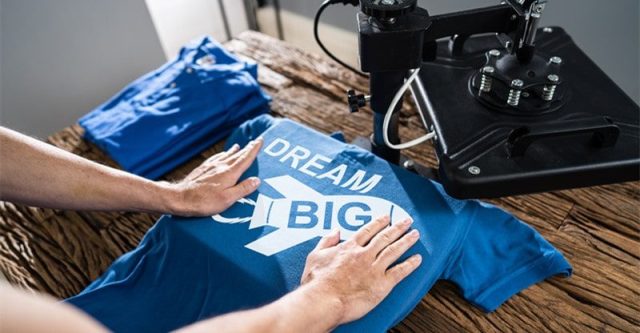The art of t-shirt printing has grown from a casual pastime to a booming market. Whether you’re a craft lover or aiming to launch a small venture, getting the hang of the nitty-gritty of t-shirt printing is crucial. In this easy-to-follow guide, we’ll dive into the ins and outs of t-shirt printing, cover a variety of printing methods, and share helpful tips to assist you in crafting standout designs. Let’s jump in!
Starting with T-shirt Printing
Before delving into t-shirt printing, it’s key to start on the right foot. Choosing the proper t-shirt is your first task. Think about the material, quality, and fit. A high-quality t-shirt means a more professional-looking end product.
The second key step is prepping your design. Creating an original design or working with existing artwork, it’s essential that it’s in the correct format and high-quality. Vector images are great for their ability to be resized without losing sharpness, whereas pixels in raster images should be dense to maintain clarity.
T-shirt Printing Techniques Explored
Now, let’s look at the different t-shirt printing options out there, each with its distinctive qualities:
– Screen Printing: A classic approach that uses stencils for each color and inks pressed through the stencils onto the t-shirt. It’s celebrated for long-lasting, vibrant prints, but isn’t as cost-efficient for small batches.
– Heat Transfer Printing: This method involves applying a design from special paper onto a t-shirt with heat and pressure. It works with various fabric colors but may need extra care as prints could crack or fade with time.
– Vinyl Printing: Great for bold, one-color designs or text, vinyl printing presses cut-out designs from vinyl sheets onto shirts. These prints last well and have a unique feel but might not suit complex designs.
– DTF Printing: Direct-to-Film (DTF) printing is a new technique where designs are printed onto a special film and then transferred onto the fabric. It’s excellent for detailed, vibrant, multi-color prints on any shirt color and is growing in popularity for its striking results. Make sure you have a compatible printer and precise calibration for top-notch prints.
Tools and Equipment: The Essentials
Investing in premium tools and machinery is vital for top-notch t-shirt printing. Whether you’re using DTG printers or heat presses, good-quality gear is a must-have. You’ll also need various inks and materials that suit your selected method.
Safety first. Some printing techniques involve heat and chemicals, so adhere to safety protocols and use protective wear as needed. Also, adequate ventilation in your workspace is a must to steer clear of harmful fumes.
Design and Artwork Tips
Your design is the centerpiece of your t-shirt project. Consider these insights to make your artwork pop:
– Vector vs. Raster: Scale vector images without losing quality, while raster images must stay high-res to avoid blurriness.
– Color Choices: Pick colors thoughtfully. They should complement the t-shirt color and stand out or blend as intended.
– Size and Position: Get the size and position of your design just right. Test various placements for the most appealing look.
– Multicolor Prep: If using many colors, print from lightest to darkest to prevent colors from running.
Troubleshooting Printing Problems
Even with careful prep, you might hit snags. Here’s how to tackle some usual printing woes:
– Stop Ink Bleeding: Pick the right ink and allow prints to dry completely.
– Prevent Fading: Wash heat transfer prints in cold water and inside out to extend their life.
– Handle Printing Mistakes: Keep your equipment in check to reduce errors — clean heads, replace parts, and use good materials.
– Ensure Proper Alignment: Double-check your design’s position to prevent off-center prints.
After-Printing Care
Post-printing care ensures your designs endure.
– Proper Drying: Follow the specific drying instructions for your printing method to ensure the ink adheres well to the fabric.
– Washing Directions: If selling your shirts, give buyers clear care instructions. Gentle detergent and turning the shirt inside out can help preserve the design.
– Smart Storage: Keep printed shirts in a cool, dry place away from sunlight to avoid deterioration.
Marketing Your Printed T-shirts
Considering a t-shirt printing business? Keep these pointers in mind:
– Pricing: Set thoughtful prices covering costs, market trends, and your target customers.
– Sales Outlets: Consider selling online or at local events. Each has benefits and obstacles.
– Branding: Craft a unique identity to make your t-shirt brand memorable.
Conclusion
T-shirt printing is both creative and fulfilling. Whether for personal expression or as a business, mastering the craft is fundamental to success. Select the right materials, carefully design, choose the best printing method, and take steps to preserve your work.
With passion and a bit of inventiveness, you can produce stunning t-shirts that wow. Enjoy printing!
































